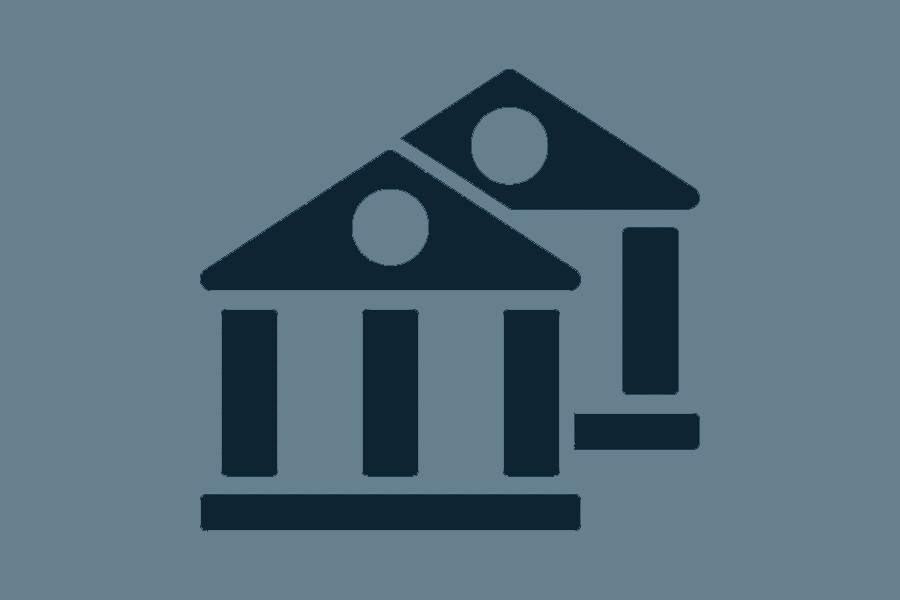In any country, a safe and sound banking system is the sine qua non of a strong economy.
By channelising funds from savers to borrowers, banks help keep the wheels of the economy moving, in the way boosting the confidence of businesses, investors, and consumers.
But for years, state-owned banks in Bangladesh have been foundering under the weight of stressed or non-performing assets -- or bad loans, in lay man's term -- all thanks to irrational lending and inadequate evaluation and monitoring of debtors.
Any loan that remains overdue for over three months is termed as a stressed asset in the banking sector, reports UNB.
And today, this huge pileup of bad loans threatens to derail the economic revival in Bangladesh by choking the credit supply channel of the economy, as against export earnings and the resilience of the private sector in fuelling growth amid Covid-19.
In fact, the cumulative non-performing loans (NPL) of six state-owned commercial banks (SCBs) currently stand at Tk 438.36 billion against that of the combined figure of Tk 491.91 billion of 42 private commercial banks (PCBs).
For years, Bangladesh Bank (BB) -- the central bank -- has been underscoring the need for state-owned banks to strengthen the recovery of loans lying unrealised by defaulters, many wilful.
At the same time, banks have been advised to take necessary steps in meeting the capital deficit and creating a professional asset-liability management ecosystem.
Md Serajul Islam, central bank's spokesperson, and executive director, told UNB that the stressed assets of the state-owned banks increased "marginally due to the higher volume of total outstanding loans".
Implementation of a slew of stimulus packages has caused an increase in the outstanding loans in the country's banking system during the first half (H1) of the year, he said.
The amount of outstanding loans rose by more than 3.0 per cent to Tk 1213.16 trillion as of June 30, 2021, from Tk 11.77 trillion quarter on quarter, as per BB data in UNB's possession.
Janata Bank Managing Director Md Abdus Salam Azad admitted the growing stressed assets problem in the economy.
“We have already taken some steps as per the central bank’s guideline to increase the recovery of NPL, and we are working towards reducing the bad loans of Janata Bank,” he said.
However, he claimed that the state-owned banks have been doing well in sectors like remittance, agriculture loan disbursement, and recovery, implementation of stimulus loan disbursement other than loan recovery from large industries.
"The state banks work with some limitations which also affect loan recovery from the top defaulters," he said.
But the recovery of NPL of four large state-owned banks is not satisfactory, if figures are to go by.
In the first six months of this year, Sonali Bank set a target of collecting Tk 3.50 billion from the top 20 defaulters, but only Tk 100 million was recovered. During the period, Janata Bank collected Tk 70 million against the target of Tk 8.0 billion, Agrani recovered Tk 360 million against the target of Tk 2.40 billion and Rupali collected only Tk 3.80 million against the target of Tk 2.20 billion.
The NPL of state-owned specialised banks also increased from Tk 20.38 billion to Tk 24.56 billion in H1 of the year.
Although the gross NPL ratio in the banking sector moderated to 8.18 per cent at the end of Q4FY21 from that of 9.16 per cent at the end of Q4FY20, it increased marginally from that of 8.07 per cent at the end of Q3FY21 partly due to the lifting of the loan moratorium facility and slackness of economic activities owing to the nationwide lockdown.
The gross NPL ratio was recorded at 8.61 per cent at the end of Q4FY21 from that of 8.48 per cent at the end of Q3FY21. The gross NPL ratio of PCBs went down to 5.44 per cent at the end of Q4FY21 from 5.63 per cent in Q4FY20, although it increased from that of 5.13 per cent at the end of Q3FY21.
On the other hand, the gross NPL ratio of SCBs and FCBs moderated to 20.62 per cent and 3.91 per cent at the end of Q4FY21 from 20.91 per cent and 4.13 per cent, respectively, at the end of Q3FY21.


